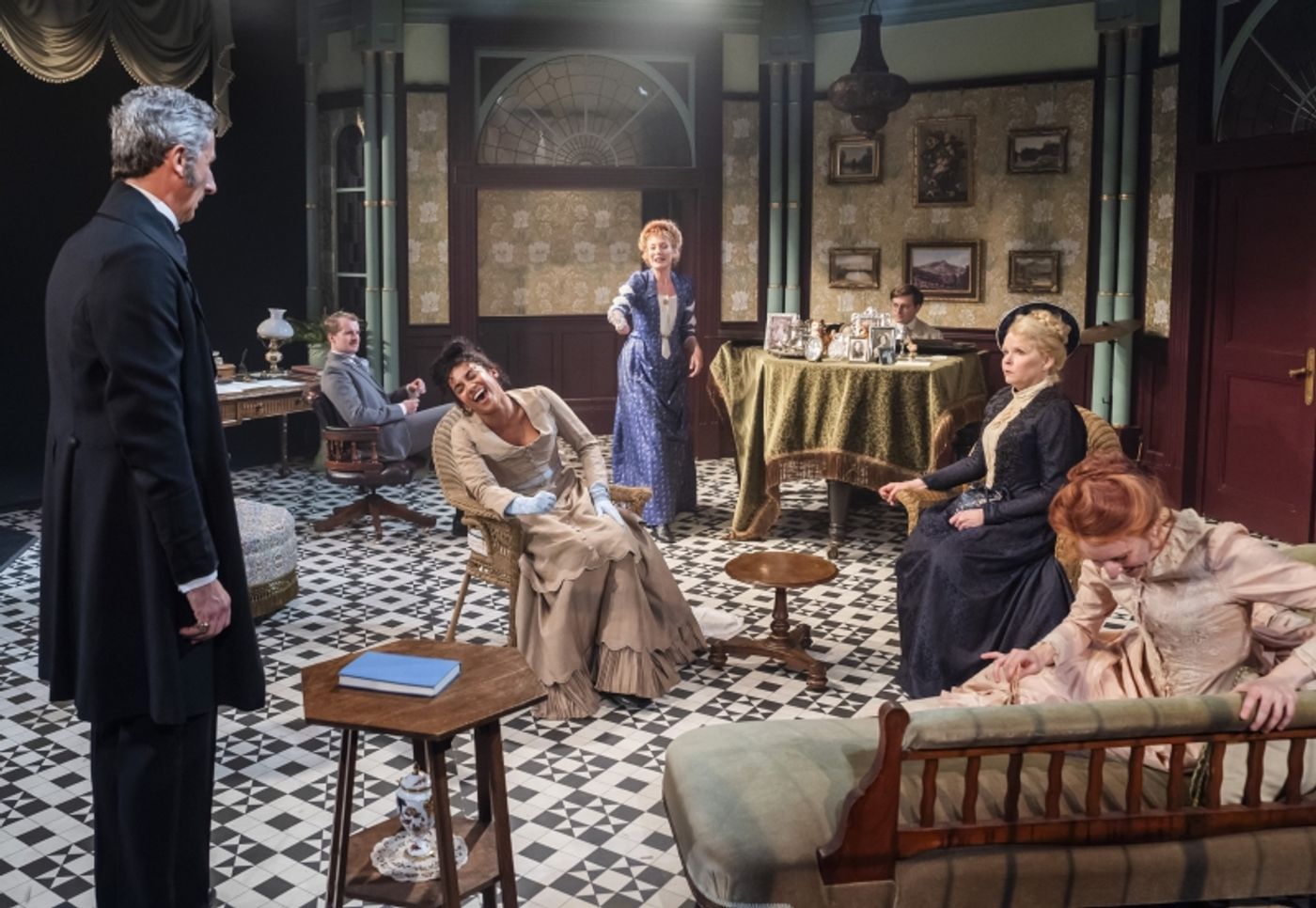Review: THE CABINET MINISTER, Menier Chocolate Factory
A pitch-perfect Victorian farce, hilarious, relevant, and relentlessly amusing.

![]() Sir Julian Twombley is in hot water when it’s discovered that his family has been living way beyond his House of Commons’ wages. This isn’t the latest front page of a broadsheet-made political attack, it’s the premise of one of Arthur Wing Pinero’s later comedies. Though Victorian farce isn’t exactly all the rage at the moment, The Cabinet Minister is so unfortunately relevant and timely you’d never think it was written in 1890.
Sir Julian Twombley is in hot water when it’s discovered that his family has been living way beyond his House of Commons’ wages. This isn’t the latest front page of a broadsheet-made political attack, it’s the premise of one of Arthur Wing Pinero’s later comedies. Though Victorian farce isn’t exactly all the rage at the moment, The Cabinet Minister is so unfortunately relevant and timely you’d never think it was written in 1890.
Nancy Carroll’s adaptation tinkers with its original form, bringing the piece up to speed with a contemporary pace, but maintaining its authentic quick wit and fabulous turns of phrase. Carroll joins Nicholas Rowe, Sara Crowe, and a further captivating cast list under Paul Foster’s crisp direction, delivering a one-laugh-a-minute play bound to lighten up the dreariest autumn day.
This is a production that’s gleefully proud of its genre identity and the limitations that come with it. It’s such an excellent final product that we’re delighted to indulge its theatrical contract: the silliest, most unbelievable twist and all the visual contradictions contained in it are delivered with such exquisite sarcasm and cheerful panache that we don't mind a world where it’s possible to enter an empty room and not notice the two people who are just sitting very still in order not to be seen. It’s ridiculous, but Foster makes it work.
%20and%20Nancy%20Carroll%20(Lady%20Katherine%20Twombley)%20(2)%20-%20credit%20Tristram%20Kenton.jpg?format=auto&width=1400)
The Twombleys’ daily lives might be characterised by endless gossip and far-fetched intrigue, but each member of the family and all those who surround them are easily recognisable modern figurines, from the posh man-child with a flashy lifestyle and his mate whose whole personality revolves around his eight-year gap year to the overbearing mother friend who insists in meddling in everybody’s business. Then, you’ve got the resolute social climbers and the matriarch who likes to tell overblown stories about her superlative relatives. They’re an amusing bunch. Imagine a funnier, historically accurate, Victorian version of Bridgerton with much better costumes and a stunning set (both by Janet Bird - this project wouldn’t be the same without the designer’s contribution).
Carroll is dazzling both as adaptor and performer; she commands the stage with scrumptious irony, deliciously flawless comic timing, and double-entendres galore as Katherine “Kitty” Twombley. The women really raise the bar here. Dillie Keane is an unstoppable scene-stealing force as the Lady Macphail. She waves her cane around, demanding everyone’s attention as she proudly sings the praises of the clan with increasingly grandiose and creative allegories in dead seriousness. The mischief and subterfuge that surrounds the Twombleys doesn’t seem to touch the Highlanders. A joy to witness.

On the opposite side, Phoebe Fildes and Laurence Ubong Williams are the ruthless sycophantic blackmailers. Desperate to join London’s high society, Fanny Lacklustre wants to be addressed as a lady in the afternoon, but she remains a dressmaker in the morning, out of need. Her brother is a real character. Ubong Williams holds court with his open East End vowels, all aitch-dropping and vicious plots while Nicholas Rowe looks down his nose at him and stiffens when he gets too close. From Joe Edgar’s bonhomie to George Blagden’s refusal to accept his role in society, and from Dom Hodson’s unaware intensity to Matthew Woodyatt’s demure discomfort, the company is a perfectly calibrated collection of dramatic flamboyance.
Foster’s vision is unmistakable. He manages to revive a rarely produced piece and not only make it genuinely funny, but as relevant as it could be. He punctuates each scene change with music played by the actor-musos. Obviously, everybody lives happily ever after in Pinero’s play and no poor person ever enters their scope, but Carroll and Foster introduce a final scene that directly ties it to our own world. In a single brushstroke, they flip the conversation and refocus it on generational wealth. It’s clever and reveals a firm intention. Once we go past the magnificent ironic tension and the objectively hilarious deliveries, we find a healthy sociopolitical discourse if we’re willing to read between the lines.
This is one to see.
The Cabinet Minister runs at the Menier Chocolate Factory until 16 November
Photo Credits: Tristram Kenton
Reader Reviews
Powered by
|
Videos

